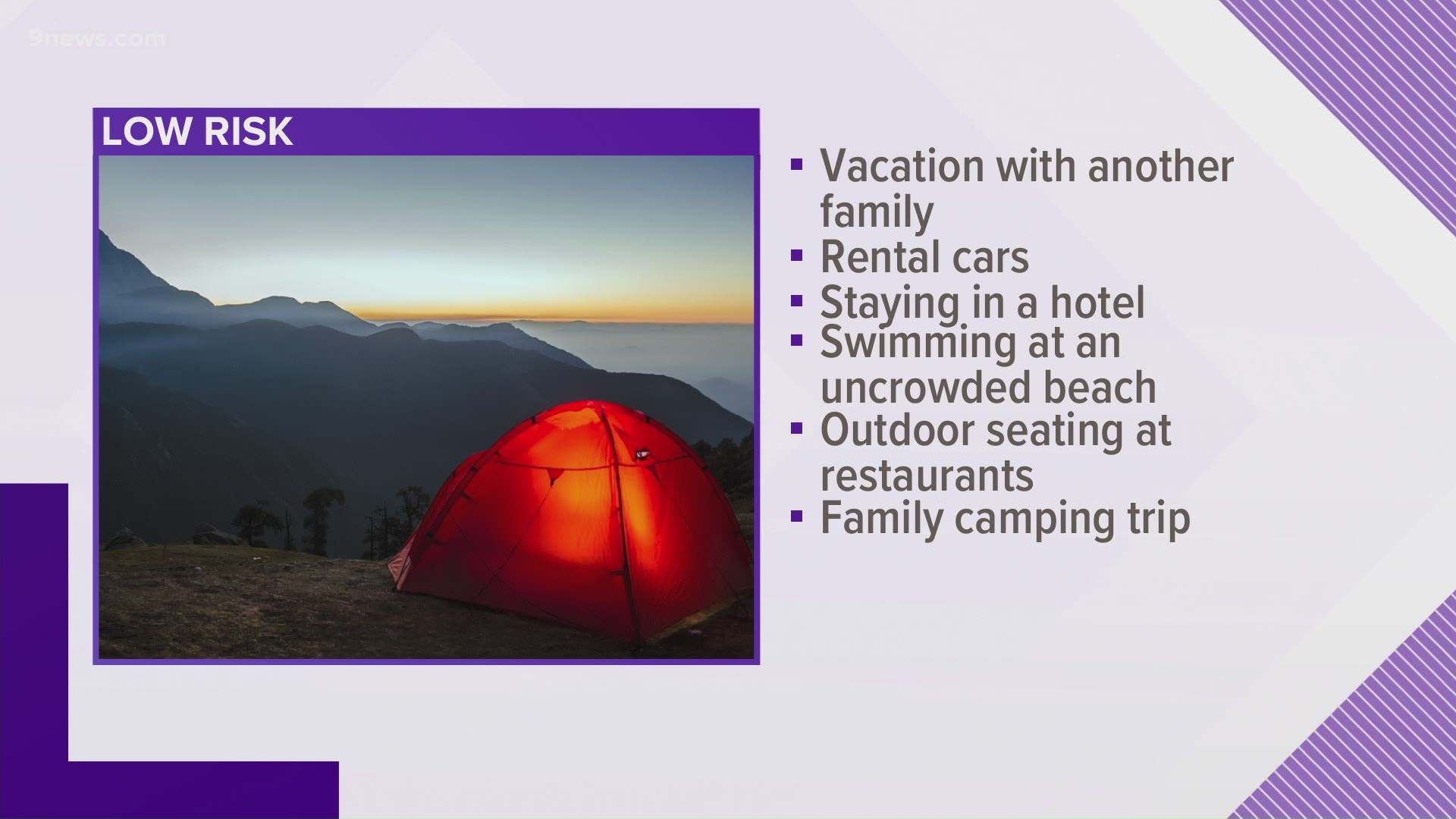COLORADO, USA — Traditional summer activities like vacationing, swimming, backyard cookouts and camping may bring a bit of apprehension for seniors this year.
The Centers for Disease Control & Prevention (CDC) and the National Institutes of Health (NIH) have compiled a list of 14 "summer do's and don'ts" activities ranked from low-risk to high-risk to help seniors and others navigate the summer during the COVID-19 pandemic.
9Health Expert Dr. Payal Kohli said the list might change given the rising numbers of the novel coronavirus cases across the country.
Current CDC guidelines outline the following activities in three separate groups: low-risk, medium-risk and high-risk.
Low-risk activities
- Vacation with another family
- Rental cars
- Staying in a hotel
- Swimming on a beach
- Outdoors seating at restaurants
- Camping
Kohli said those "singular" activities with your family group, such as camping trips, are especially safe as you are limiting your contacts with other members of the public.
"That's a relatively protected activity independent of what the virus is doing because your contact with other people is very small," Kohli said. "But if you're going to a restaurant to eat or you are going to a community pool to swim with your kids, that can change because the virus activity in the community goes up, so your risk can increase in accordance."
Medium-risk activities
- Swimming in a community pool
- Indoor dining at restaurants
- Outdoor sports
- Backyard cookout
- Public restrooms
Kohli said the medium-risk activities are the most likely to change depending on what happens to coronavirus case numbers in Colorado.
"As soon as those cases start to increase, and we're starting to get into that exponential part of the curve, those medium risk activities will then get upgraded to high risk activities," Kohli said. "And really, what will make them higher risk is the fact that the spread of the virus is more likely to happen in those types of activities."
High-risk activities
- Haircuts
- Large unprotected gatherings
- Air travel
Kohli said people need to think of managing COVID-19 as a "dance" with a potentially very dangerous partner.
"So I like to think about our relationship with the virus as sort of a tango," Kohli said. "The virus makes their move, then we have to make our move. And that's exactly what we've been doing. So we slowly push our boundaries, we see what happens with the virus, and now that the virus is flaring up, we've got to back off on those boundaries, and we start to change the risk profile of some of the activities that we may have done a month ago because they were considered lower risk, or vice versa. We're doing things now that we may not have done back in March when we first did the shutdown."
And what happens if COVID-19 numbers continue to rise across the country, even if people increase the danger levels of these daily summer activities and our practices become safer?
Kohli said the nation may have no choice but to enact another shutdown, an option she called "the biggest and least popular tool" in our toolbox.
SUGGESTED VIDEOS: COVID-19 Coronavirus

